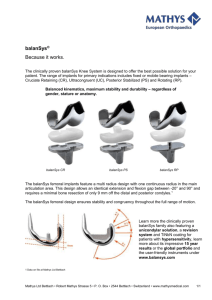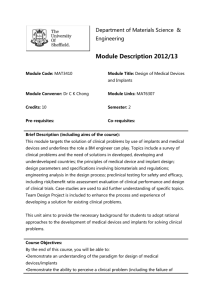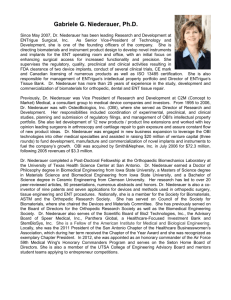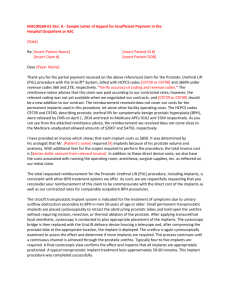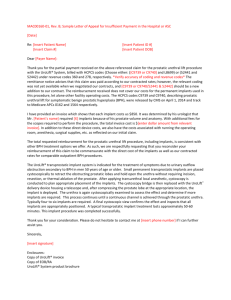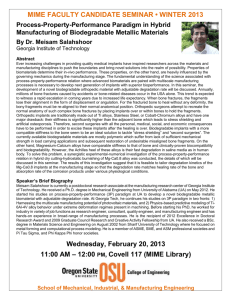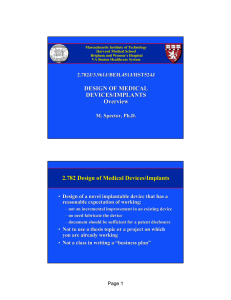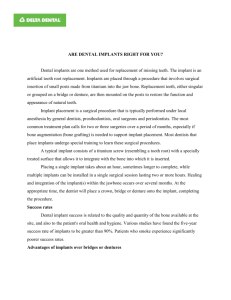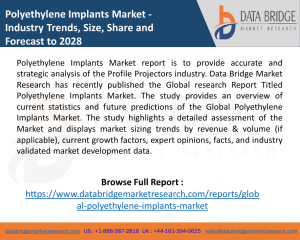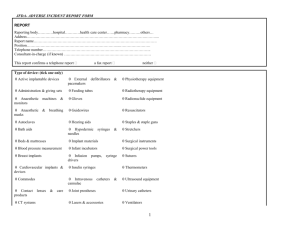Surgical Implants
advertisement
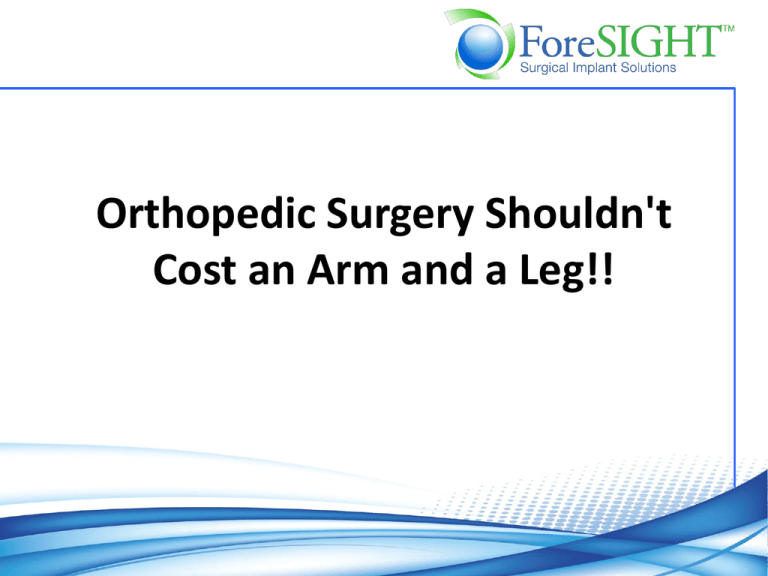
Orthopedic Surgery Shouldn't Cost an Arm and a Leg!! Topics • Market Dynamics • How buying decisions are made and the implications of those decisions • Supply Chain/Distributor Dynamics • Markups and Net Cost Identification • Opportunities for Cost Savings Key Industry Challenges— Market Dynamics $60.00 Medical Device Spend US demand for implantable medical devices is forecast to increase 7.7 percent annually to $52 billion in 2015. Orthopedic implants will remain the largest segment and be one of the fastest growing. Other implants expected to experience exponential growth include neurostimulators and drug implants* (widely utilized in Workers Compensation procedures) $50.00 $40.00 $30.00 $20.00 $10.00 $2013 2014 2015 *Freedonia Group, Implantable Medical Devices to 2015 Vendor Selection • Most implants are Physician Preference Items – Fellowship Support – Training • Impediments to change; – Relationships with sales reps, – Time required to learn new systems, – Little difference in outcomes for average patient population • New Surgeon Acquisition Strategies – New Product – Hire Key Sales Rep The Implications of Surgeon Choice • Hospital/ASC responsibility to negotiate pricing, purchase, manage inventory, bill and collect for surgical implants • Surgeons (vendor “customer”) are detached from the financial implications of their choices (with exceptions being some physician owned facilities) • This detachment can lead to vendor rep influence in the OR Materials Management Vendor Direct Distributor Model Inventory Management Impact of GPO’s What is Cost? • • • • • List Price- Highest Possible Price Point True Net Cost Discounting and Rebate Structures Markups Reimbursement Methodologies True Cost and Reimbursement $2,450.00 $2,500.00 $1,960.00 $2,000.00 Average 3.5x Markup $1,500.00 $875.00 $1,000.00 $700.00 $500.00 $Hospital Avg Sale Price Provider Markup Cost Plus 25% 80% of Billed Charges (PPO Rate) Cost Savings Opportunities 10 Questions
